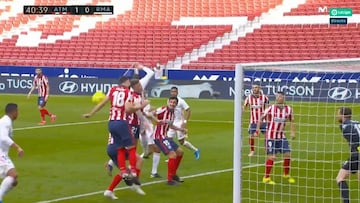“That is never a penalty”
Our resident referee Eduardo Iturralde explained that despite the ball hitting Felipe’s hand in the box during the Madrid derby it was not a penalty.

The big controversy of the Madrid derby came in the 40th minute when the Real Madrid players demanded a penalty for a handball from Felipe. Referee Hernández Hernández went to the monitors to check the replay, but decided there had been no handball and therefore no penalty.
Ball hits Felipe's hand but it is not handball
Former referee Eduardo Iturralde, speaking on the radio, said the decision was spot on. “Felipe jumps for the ball, using his arms to get momemtum and when his arms are coming back down the ball hits him. He never leaves his arms up at any point nor does he try to make himself bigger. It’s not a handball. González González [in the VAR booth] intervenes too much. That’s never a handball,” said the former referee.
FIFA clarifies handball rule
Fifa released a clarification on the handball rule on Friday, confirming that “not every touch of a player’s hand/arm with the ball is an offence. In terms of the criterion of the hand/arm making a player’s body “unnaturally bigger”, it was confirmed that referees should continue to use their judgment in determining the validity of the hand/arm’s position in relation to the player’s movement in that specific situation.”
They set out the rule as follows.
“It is a handball offence if a player:
deliberately touches the ball with their hand/arm, for example moving the hand/arm towards the ball;
touches the ball with their hand/arm when it has made their body unnaturally bigger. A player is considered to have made their body unnaturally bigger when the position of their hand/arm is not a consequence of, or justifiable by, the player’s body movement for that specific situation. By having their hand/arm in such a position, the player takes a risk of their hand/arm being hit by the ball and being penalised; or
scores in the opponents’ goal:
Related stories
-directly from their hand/arm, even if accidental, including by the goalkeeper; or -immediately after the ball has touched their hand/arm, even if accidental.”
-immediately after the ball has touched their hand/arm, even if accidental."